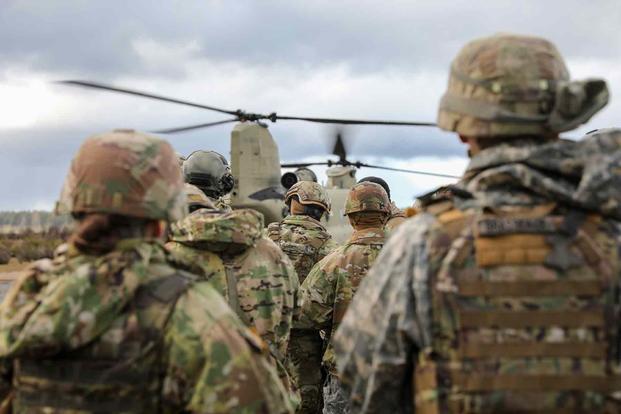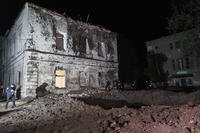One of the Army's premier bases on the West Coast, in the midst of refitting its barracks to accommodate air conditioning, has tweaked the rules, now allowing soldiers to purchase their own units amid record-breaking temperatures.
Joint Base Lewis-McChord, home to the 2nd Infantry Division's Stryker brigades, has virtually no air conditioning in its barracks. The area, just south of Seattle, had been known for its mild summers, with civilian homes traditionally not having air conditioning. But the area hit an all-time record high temperature in June 2021 of 108 degrees Fahrenheit and may be in for another heat wave this month, as climate change threatens more severe weather.
New barracks being planned will include air conditioning, and an additional two barracks buildings currently undergoing renovations will be fitted with AC, a service spokesperson told Military.com. It is still unclear when all buildings on post will be cooled.
Read Next: Army Reserve Education Benefits Collapse Halts Fall Semester Enrollments
The Army budgets roughly $1 billion per year for barracks renovations and new construction, a figure that some estimates say is far too small. Some dilapidated barracks at other bases may be more than a decade from seeing relief.
There are 9,222 rooms for active-duty service members on post at JBLM. Of those, 7,894 do not have air conditioning, according to Army data reviewed by Military.com.
In the meantime, soldiers are allowed to use portable air conditioning units in their barracks, but at their own expense. Those units typically range between $300 and $500. In the past, having one required a special waiver.
However, window units are authorized only for rooms on the first floor. Units are also not allowed to be set lower than 78 degrees Fahrenheit.
Federal standards from the Occupational Safety and Health Administration, or OSHA, recommend that indoor temperatures not exceed 76 degrees Fahrenheit, but the military broadly doesn't have to comply with those guidelines. Also, base electrical systems may not have the capacity for air conditioners to continuously run at colder temperatures.
"Most of the barracks on JBLM were not designed to accommodate the additional electrical loads, and [Department of Public Works] has concerns with the buildings' electrical systems being able to handle the increased load along with increased moisture and humidity control," Joe Piek, a base spokesperson, said in a statement to Military.com.
Air conditioning is becoming standard in new home construction in the Pacific Northwest. Now, roughly half of homes in Seattle have air conditioning, a trend that has picked up as temperatures have risen in recent years.
But barracks are generally not as open and ventilated as civilian homes. They're often small concrete rooms with one or two windows, usually smaller than the studio apartments found in most metropolitan areas, and often shared.
Temperatures that may be comfortable in a home may be more stuffy and warm in tight military living quarters. In the coming decades, Joint Base Lewis-McChord is expected to see twice as many days of temperatures exceeding 90 degrees Fahrenheit.
-- Steve Beynon can be reached at Steve.Beynon@military.com. Follow him on Twitter @StevenBeynon.












